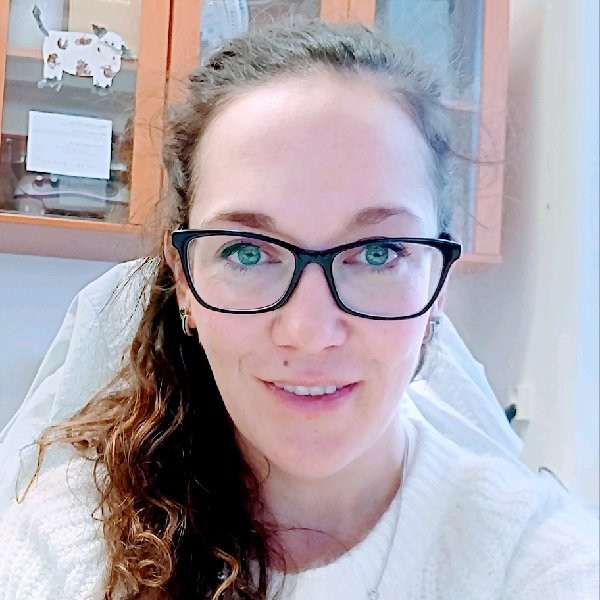Our research focuses on identifying and solving problems associated with emerging contaminants that threaten not only the quality of the environment, especially water resources, but also human health. As environmental engineers, we connect the latest scientific knowledge with practice and the development of innovative advanced technologies for the sustainable elimination of these contaminants.
We also study their fate, transport, and transformation in the environment. Part of our approach includes ecotoxicity tests, which allow us to assess the impacts of these substances on ecosystems and ensure that the proposed solutions are not only effective but also environmentally friendly.

RESEARCH AREAS
Emerging contaminants, their occurrence and transformation in the environment
- Benzophenone-type UV filters and other personal care products
- Per- and polyfluoroalkyl substances (PFAS) and other emerging POPs
- Pharmaceuticals, e.g., analgesics, anti-inflammatory drugs (NSAIDs), or hormones
- Transformation processes in the environment, decontamination in industry
Modern advanced oxidation processes (AOPs)
- Removal of organic pollutants from wastewater using AOPs
- Homogeneous and heterogeneous catalysis, sulfate and hydroxyl radical reactions, photochemistry, microwave chemistry
- Study of contaminant degradation mechanisms, optimization of process parameters
- Technology development and scale-up to industrial scale
In-situ chemical oxidation and reduction
- Application of oxidizing and redox agents into the geological environment for the remediation of contaminated sites
- Degradation of recalcitrant contaminants (e.g., chlorinated hydrocarbons, PAHs)
- Fate of agents in the geological environment (stability, transport) and minimization of side effects on ecosystems
- Numerical process simulations, model validation
Ecotoxicity Assessment
- Ecotoxicity assessment of degradation products from the transformation of organic pollutants
- Leaching tests and ecotoxicity assessment of secondary raw materials (waste glass, slag)
- Study of changes in the bioavailability of hazardous elements from construction mixtures containing recycled materials
Selected Group Publications
2024
MCGACHY L., SEDLAK, D.L., 2024. From Theory to Practice: Leveraging Chemical Principles To Improve the Performance of Peroxydisulfate-Based In Situ Chemical Oxidation of Organic Contaminants. Environ. Sci. Technol. 58, 17–32. https://doi.org/10.1021/acs.est.3c07409
SKAROHLID R., KRALJIČ D., SUCHAN J., KÜHNL K., HANZLOVÁ B., TĚŠÍNSKÁ P., KHOLOMYEVA M., MARTINEC M., MICHALCOVÁ A., MCGACHY L., 2024, Overlooked Effects of Chlorides and Bicarbonates on the Intensity of Peroxydisulfate Activation in Fe(II)/citric acid-S2O82− Process, Environmental Technology & Innovation, 35, 103687. https://doi.org/10.1016/j.eti.2024.103687
TESINSKA P., SKAROHLID R., KROUZEK J., MCGACHY L., 2024, Environmental fate of organic UV filters: Global occurrence, transformation, and mitigation via advanced oxidation processes, Environmental Pollution, 363, 125134. https://doi.org/10.1016/j.envpol.2024.125134
2022
MOCOVÁ, K. A., PETROVÁ, Š., POHOŘELÝ, M., MARTINEC, M., TOURINHO, P. S., Biochar reduces the toxicity of silver to barley (Hordeum vulgare) and springtails (Folsomia candida) in a natural soil. Environmental Science and Pollution Research, 2022, 29 (25), 37435-37444. https://doi.org/10.1007/s11356-021-18289-2
ROSKOVA Z., SKAROHLID R., MCGACHY L., 2022, Siderophores: an alternative bioremediation strategy? Science of The Total Environment, 819, 15314. https://doi.org/10.1016/j.scitotenv.2022.153144
Previous years
MARIAKOVÁ, D., MOCOVÁ, K. A., FOŘTOVÁ, K., PAVLŮ, T., HÁJEK, P., Waste Glass Powder Reusability in High-Performance Concrete: Leaching Behavior and Ecotoxicity. Materials, 2021, Article No. 4476. https://doi.org/10.3390/ma14164476.
MCGACHY L., ŠKAROHLÍD R., MARTINEC M., ROŠKOVÁ Z., ŠMRHOVÁ T., STREJČEK M., UHLÍK O., MAREK J., 2021, Effect of chelated iron activated peroxydisulfate oxidation on perchloroethene-degrading microbial consortium. Chemosphere. 266, 128928. https://doi.org/10.1016/j.chemosphere.2020.128928
ŠKAROHLÍD, R., MC GACHY, L., MARTINEC, M., ROŠKOVÁ, Z. Removal of PCE/TCE from groundwater by peroxydisulfate activated with citric acid chelated ferrous iron at 13 °C. Environmental Technology & Innovation. 19, 101004. https://doi.org/10.1016/j.eti.2020.101004
HONETSCHLÄGEROVÁ, L., MARTINEC, M., ŠKAROHLÍD, R. Coupling in situ chemical oxidation with bioremediation of chloroethenes: a review. Reviews in Environmental Science and Bio/Technology. 2019, 18(4), 699-714. https://doi.org/10.1007/s11157-019-09512-1
HONETSCHLÄGEROVÁ, L., ŠKAROHLÍD, R., ŠÍR, M., MARTINEC, M., VITTORIO, L. Interactions of nanoscale zero valent iron and iron reducing bacteria in remediation of trichloroethene. International Biodeterioration and Biodegradation. 2018, 127, 241-246. https://doi.org/10.1016/j.ibiod.2017.10.009
ŠEREŠ, M., MOCOVÁ, K. A., MORADI, J., KRIŠKA, M., KOČÍ, V., HNÁTKOVÁ, T., The impact of woodchip-gravel mixture on the efficiency and toxicity of denitrification bioreactors. Science of the Total Environment, 2019, 647, 888-894. https://doi.org/10.1016/j.scitotenv.2018.08.042.
HONETSCHLÄGEROVÁ, L., JANOUŠKOVCOVÁ, P., KUBAL, M., Enhanced transport of Si-coated nanoscale zero-valent iron particles in porous media. Environmental Technology. 2016, 37 (12), 1530-1538. https://doi.org/10.1080/09593330.2015.1120784
HONETSCHLÄGEROVÁ, L., JANOUŠKOVCOVÁ, P., KUBAL, M., SOFER, Z. Enhanced colloidal stability of nanoscale zero valent iron particles in the presence of sodium silicate water glass. Environmental technology. 2015, 36 (1-4), 358-365. https://doi.org/10.1080/09593330.2014.977825



